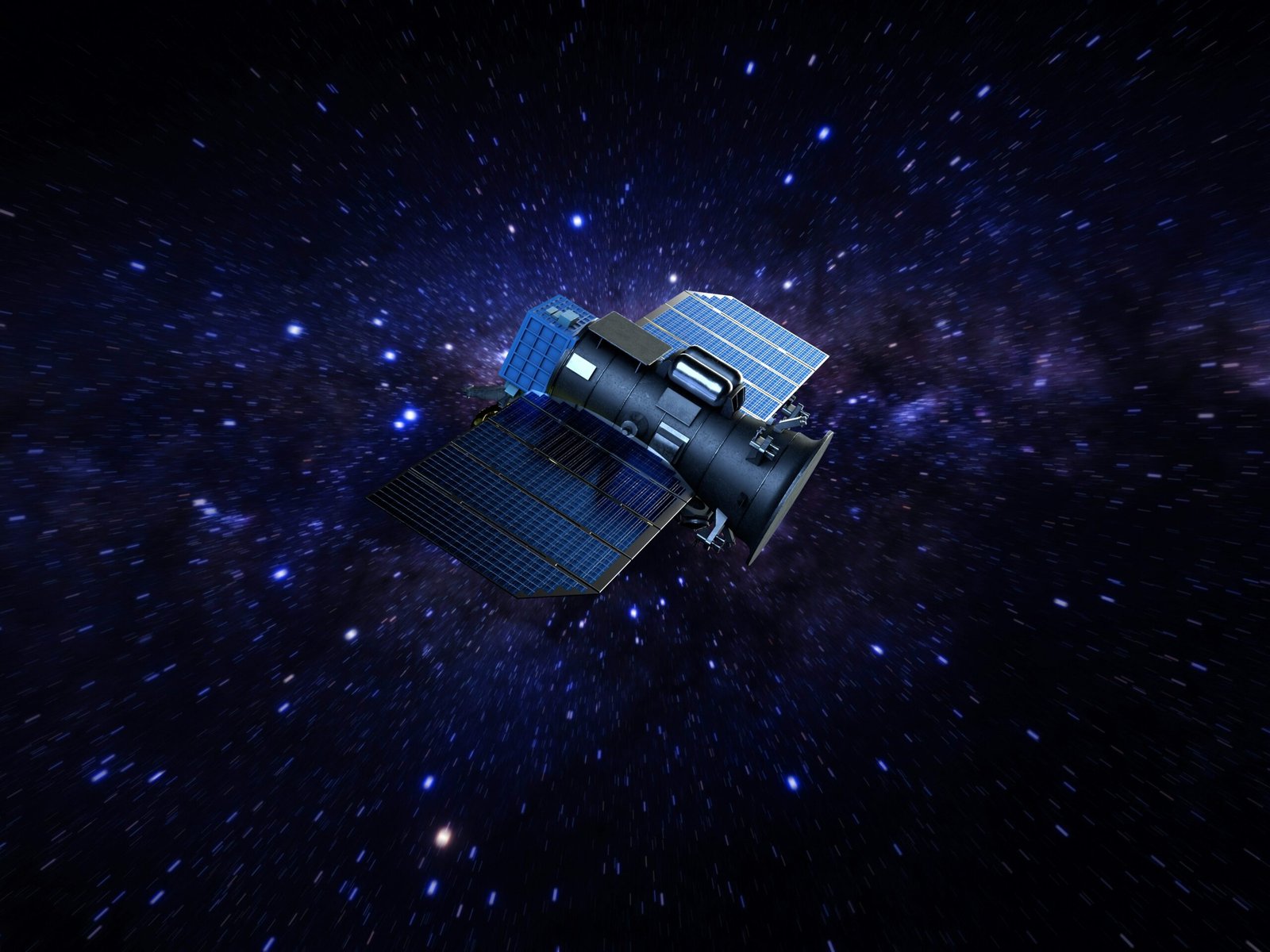Introduction to AI and Climate Science
The intersection of artificial intelligence (AI) and climate science represents a transformative development in the field of environmental research. As climate challenges intensify due to factors such as global warming and unsustainable practices, the necessity for advanced modeling techniques has become increasingly apparent. AI technologies are emerging as powerful tools for enhancing the efficiency and accuracy of climate modeling, providing researchers with new ways to analyze complex climate systems.
AI encompasses a range of machine learning techniques that enable the analysis of vast datasets, allowing researchers to identify patterns and correlations that may not be evident through traditional methods. This capability is particularly valuable in climate science, where large quantities of data are generated from diverse sources, including satellite imagery, sensor readings, and climate simulations. By leveraging AI, scientists can improve their understanding of climate dynamics and better predict environmental changes, which is essential for effective decision-making in response to climate threats.
The integration of AI into climate science not only enhances modeling accuracy but also facilitates real-time monitoring of climate-related phenomena. For instance, AI algorithms can process and analyze data on atmospheric conditions, ocean temperatures, and land use changes much more rapidly than conventional methods. This allows for quicker responses to emerging climate issues and can inform public policy and sustainability efforts.
Given the urgency of climate-related challenges, such as increasing natural disasters, rising sea levels, and shifting ecosystems, the relationship between AI and climate science is not just interdisciplinary; it is essential. Understanding how AI can be harnessed to address these pressing issues can lead to more resilient societies and contribute to global sustainability efforts.
Applications of AI in Climate Modeling
Artificial Intelligence (AI) is increasingly making significant contributions to climate science modeling, providing innovative solutions that enhance our understanding of complex climate systems. One of the primary applications of AI is through machine learning algorithms, which are utilized to analyze vast amounts of climate data. These algorithms can identify patterns and trends that traditional analytical methods might overlook, enabling more accurate projections of climate-related phenomena.
In weather forecasting, AI has revolutionized the way meteorologists predict atmospheric conditions. Machine learning models can process and analyze historical weather data much faster than human analysts, leading to improved accuracy in short-term forecasts and long-range climate predictions. This advancement is particularly crucial for disaster management, allowing communities to prepare for extreme weather events with greater precision.
AI is also instrumental in simulating future climate scenarios, allowing researchers to explore various outcomes based on different emissions trajectories and policy measures. By integrating AI into climate models, scientists can assess potential impacts on ecosystems, human health, and economic stability, leading to more informed decision-making.
Moreover, AI optimizes resource management in various sectors, including agriculture, water usage, and energy. For instance, AI algorithms can forecast agricultural outputs and resource needs, allowing for better planning and reduced waste. In the realm of renewable energy, AI aids in the integration of varied energy sources, optimizing their distribution to meet demand while minimizing carbon emissions.
Lastly, biodiversity conservation efforts benefit from AI through predictive modeling that identifies areas at risk and informs conservation strategies. Notable case studies demonstrate the practical implementation of AI in climate modeling, showcasing projects that have successfully used AI to create actionable insights for both policy-makers and environmental organizations. The convergence of AI and climate science presents a promising avenue for addressing the pressing challenges posed by climate change.
Challenges and Limitations of AI in Climate Science
The integration of artificial intelligence (AI) into climate science modeling comes with a series of challenges and limitations that must be carefully considered. One of the most pressing issues is data quality and availability. AI algorithms rely heavily on large datasets to train and refine their predictive capabilities. However, in climate science, the availability of high-quality data can be inconsistent. This inconsistency may lead to biases in the learned models, which might not accurately reflect the complexities of climate systems. Additionally, gaps in data can result in significant inaccuracies, which can have far-reaching implications for climate predictions and policy decisions.
Moreover, an over-reliance on AI models poses a risk. While AI can process and analyze vast amounts of data far more efficiently than traditional methods, there is a danger of assuming indisputable accuracy in AI-generated outcomes. Scientists and climate modelers must remain aware of the limitations inherent in these models, including potential errors stemming from their design or assumptions. Relying solely on AI for climate predictions could lead to misguided conclusions and ineffective policy responses.
Ethical considerations also arise when employing AI in climate modeling. The potential impacts of inaccurate predictions can lead to social and economic turmoil, disproportionately affecting vulnerable populations. It is crucial to assess the ethical ramifications of these models and their applications, ensuring that their use contributes positively to society without exacerbating existing inequalities.
To navigate these challenges, human oversight is indispensable. Collaboration among scientists, policymakers, and technologists is vital to ensure that AI is employed responsibly and effectively in climate science. This multi-disciplinary approach can help address limitations, improve data quality, and enhance the relevance of AI-driven insights. A concerted effort toward integrating diverse perspectives will pave the way for ethical, accurate, and impactful climate science outcomes directed by AI.
Future Perspectives: The Role of AI in Combating Climate Change
As we traverse deeper into the complexities of climate change, the impending role of artificial intelligence (AI) in climate science modeling emerges as a beacon of hope. Current trends reflect a growing emphasis on the integration of AI technologies that promise to enhance our understanding of climate dynamics and facilitate more effective responses to environmental challenges. Among the most promising innovations is the capability for real-time data integration, which harnesses vast datasets from varied sources—satellite imagery, weather stations, and sensor networks—to deliver instantaneous insights into climate patterns and anomalies.
AI-powered climate models are becoming increasingly sophisticated, allowing for simulations that utilize machine learning algorithms to analyze historical data combined with predictive modeling. This advancement enables scientists to identify potential climate scenarios and their impacts more accurately. Moreover, the ability to process and analyze big data in the context of climate science facilitates the identification of emerging complexities and interdependencies that traditional models may overlook.
Global collaboration through AI platforms represents another pivotal opportunity in the fight against climate change. By fostering international partnerships, researchers can share findings, tools, and techniques, creating a collective pool of knowledge that accelerates innovation. Platforms powered by AI can also assist stakeholders in making informed decisions by refining policy frameworks that govern the responsible deployment of these technologies within environmental science.
Furthermore, the advances in computational power bolster the potential of AI in climate modeling. As computational capabilities continue to grow, researchers will be able to run increasingly detailed simulations that incorporate millions of variables, leading to more accurate predictions of climate phenomena. This evolution is crucial, as the planet faces pressing environmental challenges that require immediate and informed action.
In conclusion, the future of AI in climate science modeling is poised to unlock transformative solutions critical in combating climate change. With continued investment in research and responsible policy development, AI can significantly contribute to our global efforts in environmental sustainability.









